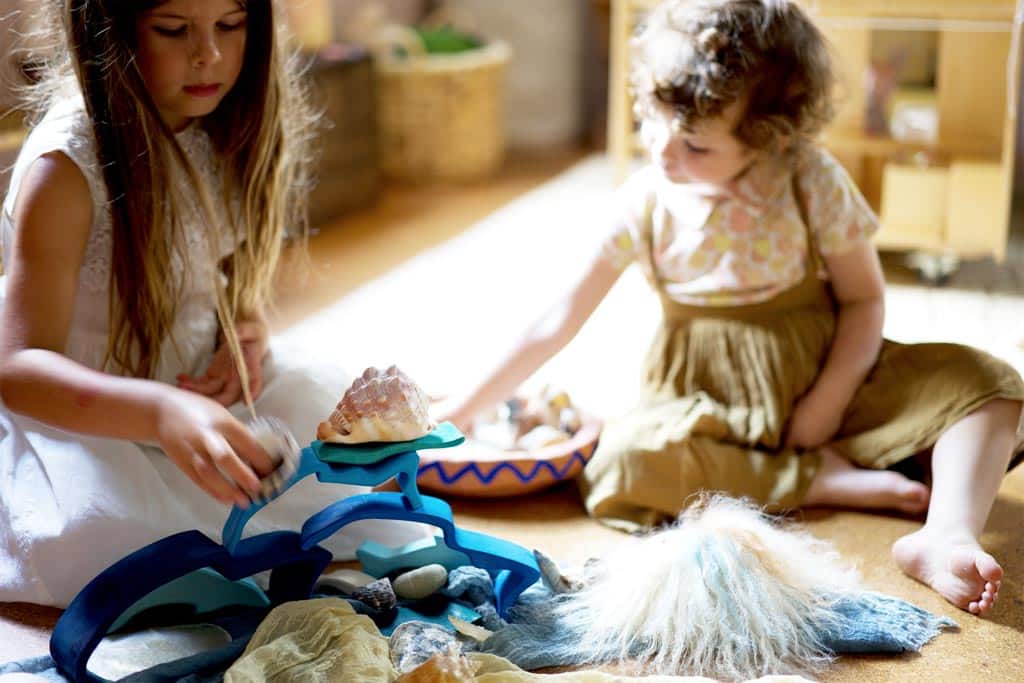Does your child like to play alone? Or do they enjoy engaging with others?
The answer has as much to do with age as with personality type.
One influential idea is that as children mature they progress through stages of play. The theory was originally proposed by Mildred Parten, an American researcher.

What are the six stages of play?
Unoccupied play – This first stage is not really play at all. The child simply stands, observing.
Solitary play – Common in toddlers. You’ll often see them playing alone, uninterested in what others are doing.
Onlooker play – Your child watches others play, without joining in. They may discuss the play but they don’t take part.
Parallel play – This is play alongside others, enjoying the same activity, but without interacting. Think of two children both building with blocks but not communicating.
Associative play – Children start to talk to each other about their play. They share their excitement, but there is no formal structure.
Cooperative play – At this, the highest stage, children organise their play. Games have rules and each child has a role.

A critique of Parten’s stages of play
- Over-simplicity. One of the main criticisms levelled against Parten’s theory is its apparent simplicity. Play, as many researchers argue, is a complex and multifaceted activity. By classifying it into distinct stages, we may miss the subtleties and overlaps between different types of play.
- Static stages. Children don’t seem to progress through the stages in a linear way. They can be onlookers one day and participants the next. Much of this has to do with the familiarity of their playmates. A child might move back and forth between different types of play, even within a single play session.
- Neglect of individual differences. Every child is unique. Some children might prefer solitary play even as they grow older, not because of any developmental lag, but simply due to their personality. Parten’s stages can inadvertently pathologise these individual differences.
Can you see how the theory of constructivism fits well with the earlier stages? Children play alone and make their own discoveries. And the higher levels are socio-constructivist. Children learn by playing together and from each other.
Final word
While Parten’s stages of play provide a helpful framework for understanding the evolution of children’s play, it’s essential to approach them with a critical lens. Recognising the limitations of the theory allows for a more nuanced understanding of how your child engages with her world through play.
What kinds of play does your child usually engage in? Does she play at a higher stage when in familiar company? You can’t force her to play at a ‘higher’ level than she is ready for, but by sitting alongside her, you can give her the confidence to try something new.




